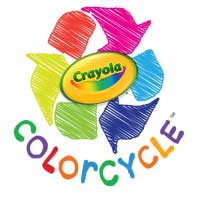
Good writeup on conversion technology project selection. Pay special attention to the last paragraph. I'd say JBI fits the bill.
http://www.terutalk.com/2013-Newsletter-V-III-10.html
Teru's Trash Talk
For a Waste Conversion Project to be initiated, someone has to decide on the systems that will be used to turn that food waste to biogas, that wood waste to bio-oil, or that plastic waste to … kerosene, or whatever fuel blend-stock you want to make from plastic waste. There are no catalogs, so a municipality or a developer releases some kind of Request for Proposals. Thousands of dollars later, they've got maybe six companies who all claim to Do whatever needs to be accomplished. Now we need the Data. Do the companies have Projects? Have they ever installed anything? Do they have a track record of successful business you can review? How "commercial" are they? There aren't any Catalogs for this emerging field, and without knowledge of who is out there, you can't compare just how commercial any one company IS. This is a fast-changing field with new companies emerging every day. Everyone is scurrying around trying to find the right angle, the first project, the solid team, the Honest Investor.
Back in the mid-'90s, NASA and the Air Force Research Lab worked out a set of metrics to describe nine typical stages of technologic development from the Gleam in the Scientist's Eye to when that Thing was ready to come off the laboratory bench. They published their Technology Readiness Levels or TRLs, breaking things into stages of Feasibility Research, Tech Demonstration, and System Test, Launch, and Operations.
Now, we need a similar set of metrics for the typical stages of Commercial Development of conversion technologies, what we'll call Commercial Readiness Levels or CRLs and these need to be organic. That is, CRLs must be representative of the natural surges and stumbles that companies experience as the commercialization process advances. It takes a great technology AND a competent operator to solve a waste conversion problem, and that takes time and money. The more thoroughly a particular system has been tested and validated, the lower the risk. Less risk in turn means more access to funding. For a developer seeking systems, a higher risk company with a low CRL may be cheaper to engage but more expensive to insure, while a deeply experienced company with proven technology may cost more initially, but be within an acceptable risk profile.
Assume for the moment that the companies under consideration are Early Stage, Pre-commercial. Much work must occur before a company can actually install that first system, and how much has been accomplished can provide an Early Adopter with the information necessary to decide on one company, one system over another. The first few questions are crucial: (1) Has the company tested a unit long and hard enough to break it, then modified the system until they have a stabile model with serious run-time? (2) Has there been Outside Validation, where somebody else with credibility ALSO says the thing works? Last but not least: (3) Is there an experienced management team in place that actually knows how to make Business, with a good technology and a good operator? If those first three CRLs have been successfully accomplished, chances are good the company is ready for their first commercial application.
